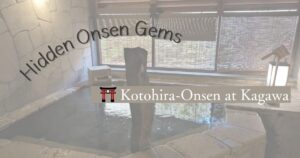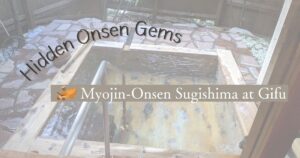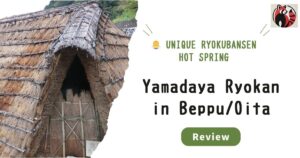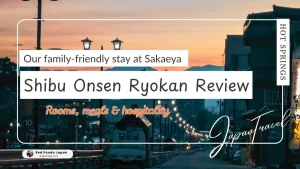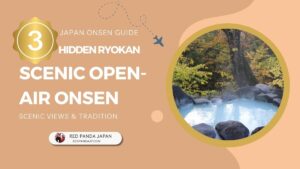Japanese onsen (hot spring) culture offers a unique and deeply relaxing experience. Whether you’re visiting Hakone Onsen, Kusatsu Onsen, or looking for a Tattoo-Friendly Onsen in Japan, understanding etiquette and best practices will ensure a smooth and enjoyable experience.
🛁 1. Types of Onsen in Japan
Japan has a wide variety of onsen, each offering its own charm and setting. Here are some of the most popular types:
🔹 Rotenburo (Outdoor Onsen) – Enjoy stunning mountain or ocean views while soaking in an open-air bath.
🔹 Kashikiri-buro (Private Onsen) – Ideal for couples, families, or those who prefer privacy. Many ryokan (traditional inns) offer rooms with private baths.
🔹 Konyoku (Mixed-Gender Onsen) – Once common, these baths are now rare but still exist in some rural areas.
🔹 Ashiyu (Foot Baths) – A casual way to enjoy onsen without undressing, often found in tourist areas like Hakone Onsen.
🔹 Gensen Kakenagashi (Natural Flowing Hot Spring) – A high-quality onsen where the water continuously flows from the source without recycling, ensuring purity and freshness.
📜 2. Onsen Etiquette and Rules
To ensure a relaxing experience for everyone, please follow these basic guidelines:
✅ Kakeyu – Rinse Before Entering the Bath Always pour warm water over your body before soaking in the main bath. This keeps the water clean and helps your body adjust to the temperature.
✅ Don’t Bring Towels into the Bath Towels should not be dipped into the water. Place them on your head or on the edge of the bath.
✅ Keep Hair Out of the Water If you have long hair, tie it up to prevent it from touching the water.
✅ If You Have Tattoos, Be Mindful About 56% of onsen facilities in Japan prohibit guests with tattoos due to cultural associations with organized crime (source: Wikipedia). If you have tattoos, consider looking for tattoo-friendly onsen, using cover stickers, or reserving a private onsen.
✅ Keep Quiet and Be Respectful Onsen are places of relaxation. Avoid loud conversations and disruptive behavior.
✅ Dry Off Before Entering the Changing Room Use a towel to wipe off excess water before stepping into the dressing area.
✅ Avoid Using Soap in the Onsen Tub Wash yourself thoroughly before entering the bath. Soap, shampoo, and other products should only be used in the washing area, not in the main bath.
🌍 3. Tips for Foreign Visitors
If you’re new to Japanese onsen culture, these tips can help you have a smooth experience:
🌸 Find Tattoo-Friendly Onsen – Search online or ask your accommodation for options if you have tattoos.
🌸 Understand the Difference Between Day-Use and Ryokan Onsen – Some onsen allow daytime visitors, while others require an overnight stay.
🌸 Visit Famous Onsen Towns – Explore traditional hot spring towns like Hakone, Kusatsu, and Beppu to experience authentic Japanese onsen culture.
🌸 Try Unique Onsen Experiences – Some onsen offer mud baths, sand baths, and sake baths for a truly special experience.
🌸 Learn Basic Japanese Phrases – Simple phrases like Konnichiwa (Hello) and Arigatou gozaimasu (Thank you) can enhance your experience.
🌸 Be Aware of Seasonal Changes – The onsen experience varies by season. In winter, you can enjoy a warm soak surrounded by snow, while in spring, some onsen offer stunning cherry blossom views.
🏨 4. Our Recommended Onsen Inns
We’ve compiled a list of the best onsen in Japan, including Hakone Onsen, Kusatsu Onsen, and more! Our selections are based on personal experiences, especially focusing on inns that provided a comfortable stay for families with children under 10 years old. We also considered not only the quality of the hot springs but also the meals and special stay experiences that made each visit unique. Check out this article to find your perfect onsen getaway!
By following these tips and embracing the culture, you’ll enjoy an unforgettable onsen experience. So take the plunge—relax your body and soul in one of Japan’s most treasured traditions! ♨️



